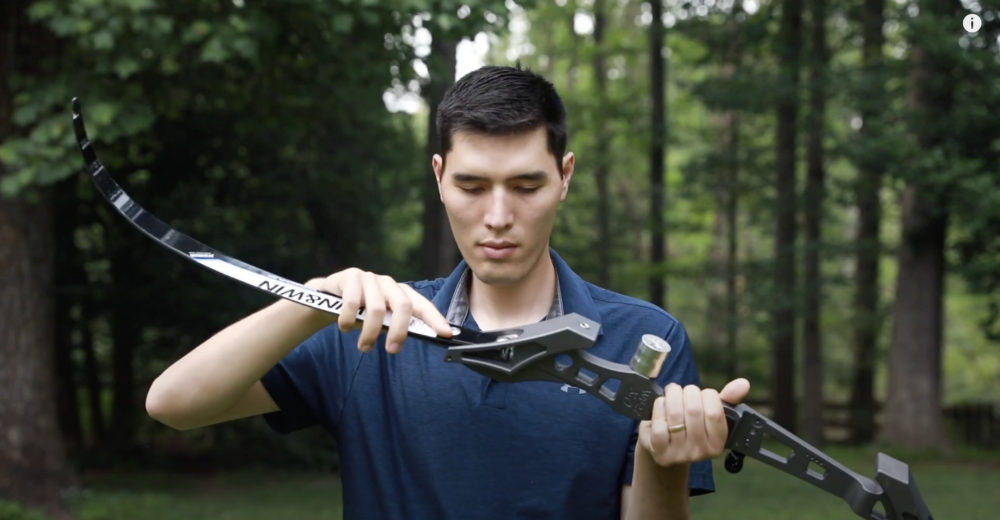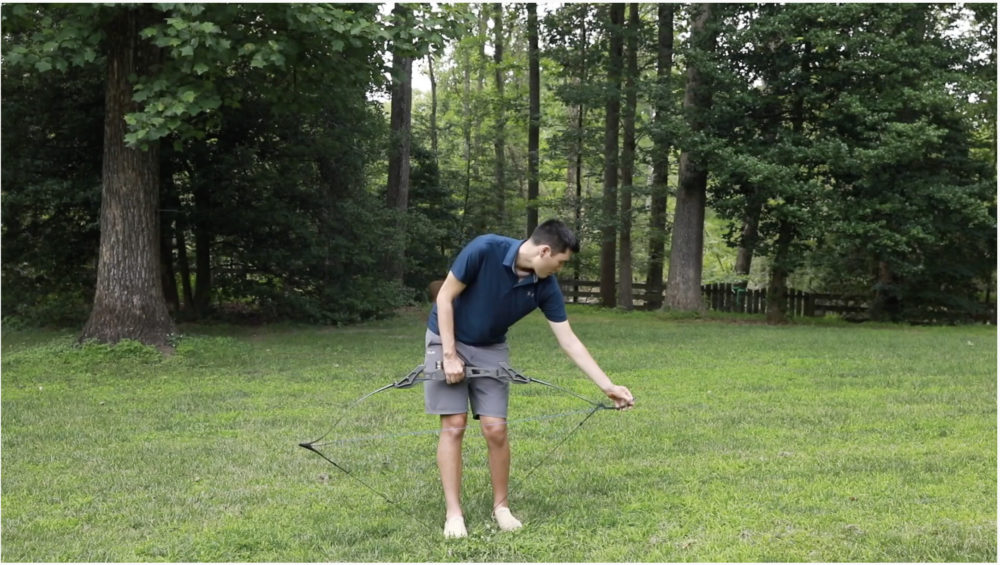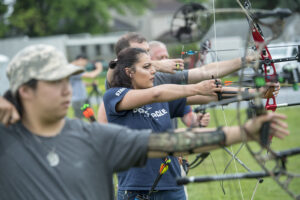Stringing a bow is a fundamental skill of recurve and longbow archery. If your bow can be taken apart for storage, you must first remove its string. Don’t worry. Your local archery shop can teach you how to safely remove and reattach your bowstring without damaging anything. If you’re more of a do-it-yourself person, let the steps below be your guide.
Stringing and unstringing your bow are basic skills, but require a specialized tool called a “bow-stringer.” This device helps archers do the tasks safely and easily. You can use other methods, but a bow-stringer provides the safest and only method bow manufacturers recommend. Archery shops can help you select the best bow-stringer for your bow, and teach you how to use it.
Bow-stringers come in several models, but all function the same. That is, they help archers flex their bows, which makes it easier to slide the string into place. Before stringing your bow, talk to your local archery shop to answer your questions and ensure you understand the job.
Here’s the step-by-step process of stringing a bow with a bow-stringer.
STEP 1: Prep Your Bow

If you have a three-piece bow, install its limbs per the manufacturer’s instructions. Consult an archery shop if you need help. Next, locate the top string loop, which is larger than the bottom loop. Slide the top loop down the top limb. Then place the bottom loop into the string grooves on the bottom limb. You’ll see the string grooves near the tip of each limb. These distinctive grooves hold the bowstring.
STEP 2: Put the Stringer on the Bow
As with the bowstring, attach the bow-stringer by starting with the top limb. Place the bow-stringer’s “saddle” end over the limb just behind the string loop. The saddle end is open and flat so it lies flat on the limb.
Next, place the pouch end securely over the bottom limb tip. The pouch end is enclosed to securely hold the bow’s tip. Your bow is now ready to be strung.
STEP 3: String the Bow

Step onto the bow-stringer with both feet about shoulder-width apart. Hold the bow by its grip and pull straight up to flex its limbs. The bow-stringer supports the bow’s draw weight as you slide the top string loop into the limb tip’s string grooves.
This step can seem daunting for beginners. How do you know if you’re flexing the bow far enough? Are you sure it’s OK to step onto the bow-stringer? Visit an archery shop. They’ll show you how to safely and properly string your bow.
STEP 4: Check the Bow
Once the top string loop is secured, remove the bow-stringer. Turn the bow so its limbs face away from you. That’s the same position you would use to shoot the bow, and it’s a safety measure. If the string slips off a limb, the limbs will release away from your body.
Last, check to ensure the string is secured in both string grooves. Your bow is now strung.
STEP 5: Check the Brace Height
A bow’s brace height is the distance from the grip’s deepest part to the bowstring. It’s important to maintain a consistent brace height because it affects your arrow’s impact point.
Measure your brace height.
Place the bow square in the grip’s deepest part and check the measurement at the bowstring. If your brace height is too low, give the bowstring a few twists. If your brace height is too high, unwind the bowstring a few twists. After adding or removing twists, restring your bow and recheck the brace height. Once you’ve done this task a few times you’ll learn how many twists produce your desired brace height.
Now that you know how to string and unstring your recurve or longbow, you’re on your way to shooting. Remember: To pick up a bow and a bow-stringer, visit an archery store.



